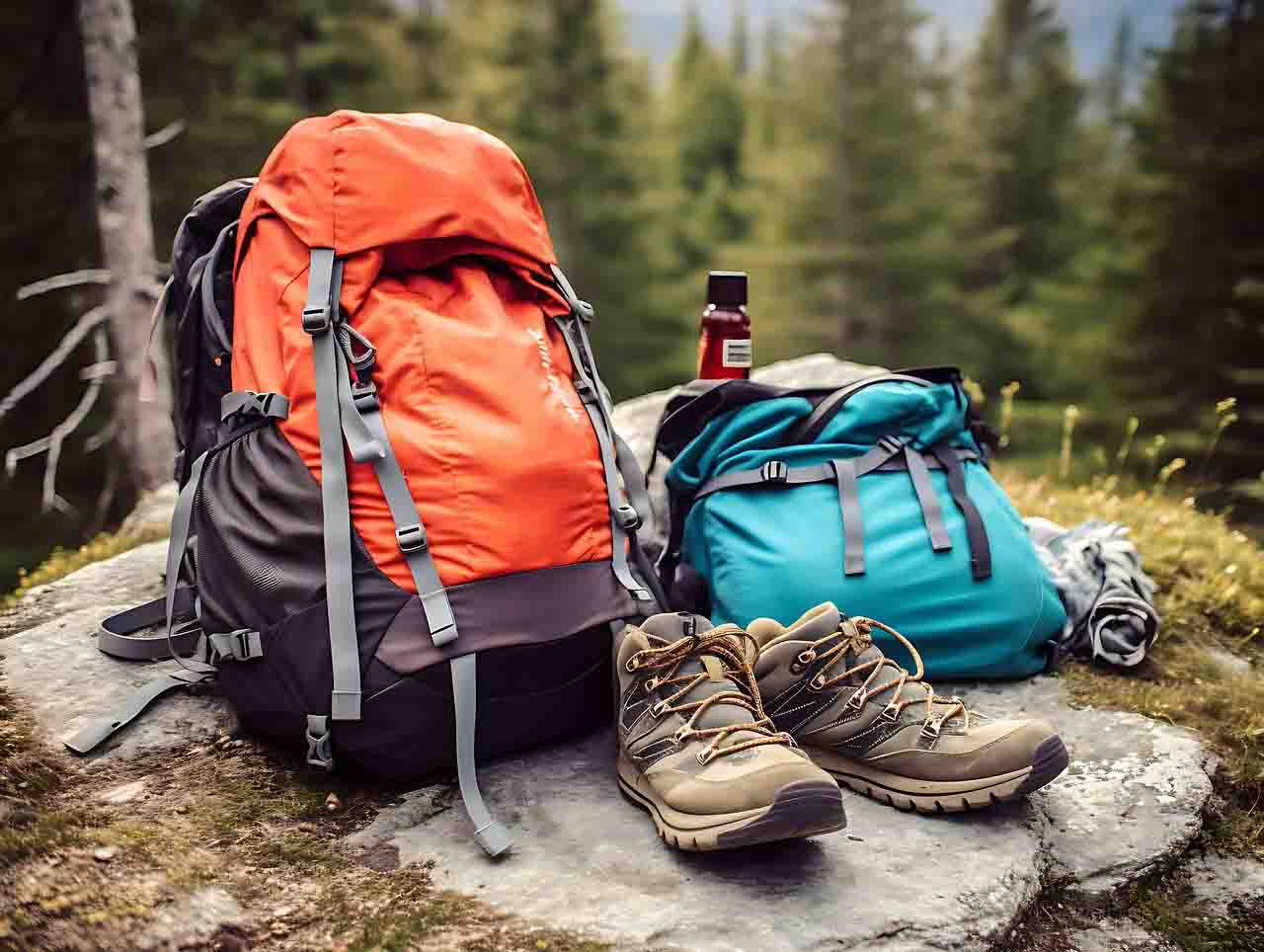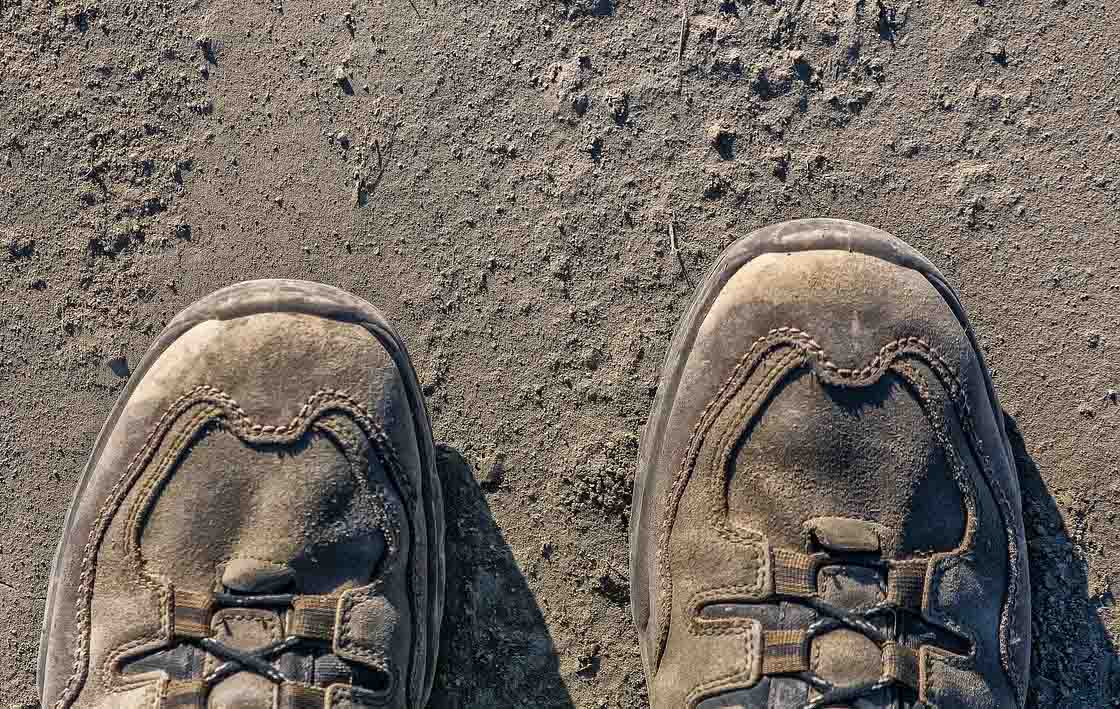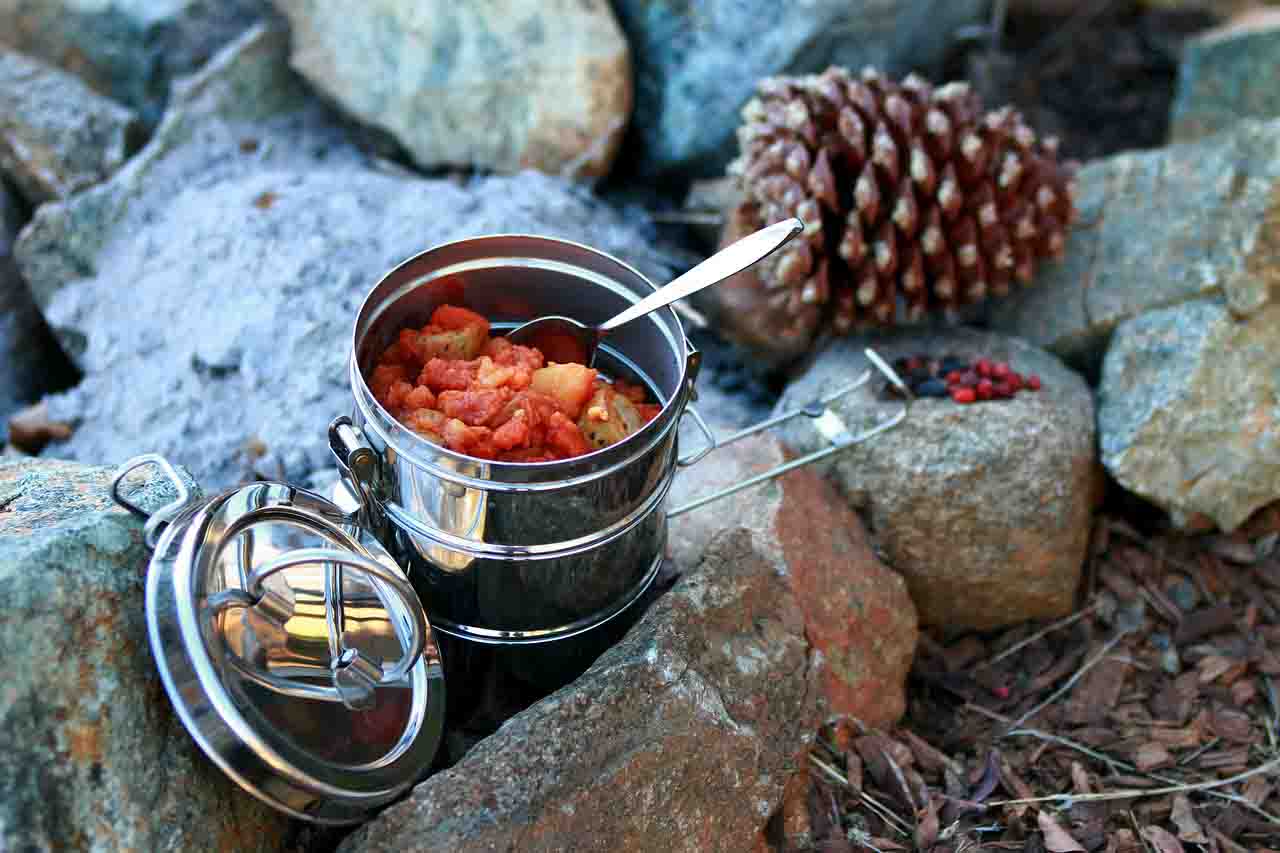Hiking Gear Essentials: What to Pack for Your Next Adventure
Are you carrying the important hiking gear essentials with you on your day hikes?
The last thing you want to do is get stranded in the forest and not have the right tools to keep you safe and sound while you figure out a way out. Anything could happen, and you might even become unable to go far. If you carry the right hiking gear essentials, you can survive just about anything.
In this guide, I’ll show you what hiking gear you should start packing with you on every hike you take.
NOTE: Some of the links in this article are affiliate links. I’ll earn a commission from them, but it will not impact your price.
Why Hiking Gear Essentials Matter
A lot of beginner hikers or those who don’t take hiking as seriously as others will practically carry nothing on a hike.
They’ve probably done that for years and never got into a situation where hiking gear essentials were needed. I call that a false safety bubble. I say false because it will pop and go away the moment something drastically happens, and the hike realizes they have nothing with them to keep them safe.
Many people make that mistake. Some don’t make it from incidents because they made that mistake.
It’s essential to carry basic hiking gear for those “what if” moments. Nature is raw and unforgiving. There aren’t many man-made controls in nature to stop us from getting harmed by them.
If we don’t have the proper gear to be able to overcome a situation in nature, then nature will take us, and we’ll just be a statistic for the next hiking safety article.
Hiking gear matters just as much as your life matters.
My Hiking Gear Essentials Recommendations
I’ve hiked for a long time. I’ve experienced enough to know what basic gear you need to take with you on every hike. These are my recommendations for day hiking gear essentials.
Hiking Backpack
You need to be able to carry your hiking gear essentials.
You can do that by taking a hiking backpack with you.
You don’t want to just bring a backpack. A traditional school backpack, for example, is a bad idea. That’s because that backpack isn’t made for the rugged outdoors. It’s made for a few books and a quick trip across campus.
You need to have a hiking or backpacking-specific backpack. It should come with various straps to adjust it and fit you perfectly. You want it to have hip support, different pockets, and adjustable shoulder straps. You also want the backpack to have an internal frame with ventilation to help keep your back dry.
Osprey makes my favorite day packs and overnight packs. In fact, many hikers use this company because its gear is made so well. There are many other packs out there as well, including ultralight weight packs for people who want to cut weight.
For a good day pack and holding all the hiking gear essentials below, I’d at least get a 20 to 30-liter capacity pack.
Hiking Navigation
Navigation is very essential for your hiking adventures.
You should pack at least three forms of navigation just to be safe.
A map and compass is your basic form of navigation. And it works when all your electronics quit working. But it isn’t as simple as buying a map and compass and tossing it into your backpack. You need to learn the basics of using a map and compass because there is a skill set required to be able to use them together.
A dedicated GPS device is a good idea, too. If you can find one with a Personal Locator Beacon (PLB), get it. A PLB can be activated if you’re lost, hurt, or need help from emergency services. It can save your life, to be blunt. Like with a map and compass, make sure you learn how to use your GPS device before throwing it into your pack.
Download apps for your phone that will help you navigate through the wilderness. Some of my favorite apps include All Trails, Gaia, Avenza, and Trail Forks. I also use Strava to record my hikes. Make sure you bring a phone charger and power pack with you in case you need to charge your phone.
Don’t ever go into the woods without navigation.
Hiking Footwear
Protecting your feet is very essential when it comes to hiking and backpacking.
Your feet are the one thing you need to be able to efficiently get out of the woods and back home.
With that being said, you should wear sturdy boots or shoes that are made for hiking. During the colder or wetter months, I recommend waterproof boots from Oboz. I’m wearing my third pair because I love them so much. I recommend getting one size larger so you can wear thicker socks in the winter.
As for socks, hiking-specific socks are the best. I like Thorlo, Darn Tough, and Smart Wool sock brands for general hiking. My Comfy Apparel makes thick alpaca wool socks for winter hiking, and I’ve found them to be some of the best on the market.
Keeping your feet comfortable is essential for enjoying your hiking adventure.
Hiking Clothes
You want to make sure you’re wearing comfortable clothing that is appropriate for hiking.
Jeans and cotton shirts aren’t going to be a good choice. That material doesn’t breathe, and it can make for a very uncomfortable hike, especially when it’s cold.
You can buy hiking-specific clothing like convertible pants, hiking shirts, outdoor jackets, gloves, and a beanie. You can also get hiking-specific shorts and warm-weather clothing.
You can also wear athletic clothing made from synthetic materials. These are your tights and leggings, yoga pants, biker shorts, compression clothing, and apparel often used for fitness. This type of clothing also tends to make for nice base layers on colder hikes.
You should also throw a few base layers in your pack for extra layers, just in case you need them.
Trail Hydration
Hydration is among the hiking gear essentials required to keep you alive and well on the trail.
Not bringing proper hydration gear can result in serious health problems and even the need to be rescued from the trail.
Staying hydrated is essential in hiking. As you hike, you lose sodium through sweat and fatigue yourself from energy loss. Properly hydrating yourself will help you overcome these issues.
Water is important to bring with you hiking, but it may not be enough.
You just also bring powder to add to your water for electrolyte replacement. That replaces the sodium you lose from sweat. I like to use GU and NUUN for my drink mixers.
Bring enough water to last you for your hike. It’ll probably be your heaviest gear item.
You should also bring a water filter that you know how to use and have tested. If you get in a pinch and need more water, you can filter from a creek. I can’t tell you how many times I’ve had to do that.
Trail Nutrition
As I said above, hiking will fatigue you and use your energy.
While hydrating is a way to help it, hydration isn’t the only thing needed in that situation. You also need to use nutrition to help replenish the lost fuel.
I like to pack trail bars from The Feed. A few of my favorite brands are Hammer Nutrition and Picky Bars. I aim for bars with good calories, carbs, and sugar to give me energy and ones that are easy to eat. I’ll eat about half a bar every hour or so, depending on how warm it is.
I also carry chews and gels with me to put electrolytes and energy back into me as I hike.
On a longer hike, I might bring a sandwich or even a freeze-dried meal by Mountain House to cook and eat. I used a fuel canister, pocket rocket stove, and a small cook cup to boil water.
It’s essential to practice good nutrition and fuel yourself for your hikes.
Hiking First Aid Kit
A good first aid kit is definitely on the list of important hiking gear essentials.
Hopefully, you never have to use it. But if you ever do need to use it, you’ll be glad it’s there.
A proper first aid kit should be added to your list of hiking gear essentials. It doesn’t need to be a trauma kit by any means. Something with simple supplies is all you need.
I use the SurviveWare kit. It’s easy to pack and includes all the basics that I would need.
I recommend at least taking any medications you might need, including stuff for allergic reactions you might have to flowers or bee stings. You should bring some basic pills like diarrhea and pain pills just in case you need them. Bring some band-aids and blister patches. A few alcohol wipes and some antibiotic ointment are also a good essential to take.
Hopefully, you’ll never use any of it, but if you need it or someone else needs it, you’ll be ready.
Hiking Lighting
Lighting is also among your hiking gear essentials that you’ll want to have just in case.
Even if you don’t plan to hike after dark, you need to have some form of light with you. What if you get lost or hurt and you end up on the trail after dark? You’ll want some way to see what’s around you and potentially signal for help.
If your light has a high enough beam, you can send SOS signals to aircraft. The signal for SOS is THREE FAST FLASHES, THREE SLOW FLASHES, THREE FAST FLASHES (ooo…o…o…o…ooo). This should only be used in an emergency situation.
I suggest bringing a simple headlamp. Turn the batteries the wrong way so it doesn’t activate in your pack and drain your batteries. You should also bring a spare set of batteries, just in case.
Getting lost in the dark without a light can make hiking significantly dangerous.
Sun Protection
Sun protection is one of the hiking gear essentials that many hikers forget about.
Why would you need sun protection if you’re in the woods, right? The truth is that, in most cases, the canopy of the woods isn’t that thick. Sun may still get to you. This means harmful rays of the sun can still reach you.
So, you should at least put on some sun protection, whether it’s sun sleeves, a hat, or simply sunblock lotion. It’s a good idea to have some of these items in your backpack, too. As we sweat, we need to reapply sunblock to stay safe.
Don’t slack on sun protection, as it can lead to a lot of serious problems if you do.
Emergency Shelter
An emergency shelter is another one of those hiking gear essentials worth taking.
Even if you don’t plan to stay all night in the woods, as I stated before, anything can happen, and it’s better to be prepared than not prepared at all. You could get hurt. You could get lost. You might need to stay dry during a storm. There are many variables to consider.
Pack an emergency shelter.
You don’t have to pack a tent or a hammock, either. All you need is a simple oversized pocket-sized rain poncho, a pocket-sized shock blanket, and some paracord. Use the raincoat and paracord to make a quick shelter (tarp system) and the shock blanket to stay warm. The raincoat doubles as a raincoat when you need it for that.
All these hiking gear essentials are extremely light in weight. You’ll never even know you have them, but if you do need them, they’ll be there for you.
Fire Starter
Fire starting is another item to add to your hiking gear essentials for that “what if” moment.
As I said above, even if you don’t plan to stay out on the trail after dark, you should still have the basics to keep you comfortable, just in case nature has different plans for you.
If you get lost and you need to create a shelter, your shock blanket may not be enough to keep you warm, especially if you’re wet and cold.
You could build a fire using your fire starter and start drying yourself and getting warm under your shelter.
My favorite fire-starting gear is from Bigfoot Bushcraft. They make really good fire-starting items to add to your backpack.
Make sure you try your fire starter out at home to make sure you understand how to use it.
Knife or Multitool
Always pack a knife or multi-tool.
You never know when you might need these items.
You might need them to repair your gear. You might need it for defense. You might need it to cut up small limbs to make a survival fire. You’ll need it to cut your paracord when making a shelter.
I like to bring a few things. I’ll bring a pocket knife, a bigger knife, and a folding saw. The folding saw is great for cutting up limbs for a fire.
A knife is a gear item that every hiker should always have.
Emergency Whistle
A whistle is another one of those hiking gear essentials people don’t think about anymore.
Who uses whistles these days?
You will if you get hurt or stranded and can’t go anywhere. If you don’t have a whistle, you’ll like yell and scream. It won’t take long to start becoming horse. Yelling and screaming can also make you lose energy quicker. This will require you to deplete your hydration and fuel quickly. It’s not a good idea to do it.
A whistle takes little effort to be blown, and a good one is pretty loud.
If you forget to get a whistle, check out the sternum strap on your backpack. It attaches on your chest. It might have a whistle built into it. That’s a hack many new hikers don’t realize.
Personal Items
You should bring personal items that you might need.
This includes hygiene for gender-specific needs, chafing cream, lip balm, and deodorant for those who sweat a lot.
You might also bring a poop kit.
Really – a poop kit. That includes toilet paper, a hand shovel, and a Ziploc bag. Wet wipes may also come in handy for this, too. Make sure you Leave No Trace, bury your waste, and take out what won’t biodegrade.
Bring only the personal items that you’ll likely need.
Insect Repellent
Insects can be a problem on the trail, especially the ones that bite you.
Mosquitoes, ticks, and biting flies love to bite us humans. Some of them carry nasty diseases with them that can infect us. Ticks can cause Lyme disease, Alpha-Gal, and other horrible conditions.
It’s important to repel these insects as best as you can.
For starters, consider treating your hiking footwear, clothing, and gear with permethrin. This chemical is the best for defeating ticks before they can attach to you. Don’t spray it on your skin or pets. After you treat your gear, wait 24 hours before using it, and you’ll be fine.
Use chemical (or natural) insect repellent to help control mosquitoes and flies. The best sprays are ones with DEET in them. As you sweat, you may need to reapply the spray as needed.
You might not be able to prevent all bites, but with these hiking gear essentials, you can prevent most.
Gear Repair Kit
Bring some basic gear repair items with you just in case you need them.
You never know when you might need to repair your gear. If a shoulder strap breaks on your backpack, carrying the bag might become an unwanted challenge. Nature can be rough on our gear, so we have to plan for the possibility of it tearing our gear up.
Some basic items are all you need.
Bring some duct tape, a small sewing kit, and zip ties. Those three items alone should be able to repair most gear malfunctions.
It’s better to have this gear available and never use it than to need it and not have it at all.
Hiking Gear Essentials Final Thoughts
That concludes my list of hiking gear essentials you should consider taking with you the next time you go hiking. I hope you found this list helpful. Please share it with your friends who might also enjoy reading it.
You can support me in writing and publishing this free guide by giving me a one-time donation or becoming a monthly supporter.
Be sure to subscribe to my free newsletter for more hiking tips and resources.
Until next time, I’ll see you on the trail!
Please Support Hiking with Shawn
Alrighty folks, I hope you have enjoyed this content. I provide it for free and it takes a while to create. If you would be so kind enough to support my efforts, you can do so by sharing this post with others, especially on social media. Be sure to subscribe to my YouTube Channel to see my latest videos, shorts and live streams. Follow me on Facebook, Instagram, and Twitter for unique content that you will only find on those pages. You might also join my Southern Illinois Hiking & Outdoor Resources Group on Facebook, too!
You can also support me by becoming a Patreon Supporter for as little as $3/month and you can cancel anytime (no contracts or catches). Patreons get access to extra features, exclusive articles, sticker packs, gifts and more. Consider buying official Hiking with Shawn Merchandise as another way to support me. I spend a lot of money on Hiking with Shawn and because of extremely high public land permit fees, I make very little money in return so everything helps.
Thanks again for checking out another one of my articles and until next time, I’ll see you on the trail!

Shawn Gossman
Founder, Hiking with Shawn
Howdy folks! My name is Shawn Gossman and I founded Hiking with Shawn. I’m an avid hiker, cyclist and outdoorsman here in the Shawnee National Forest. I was born and raised in Southern Illinois and never want to leave. Click here to learn more about Shawn Gossman





Trackbacks/Pingbacks